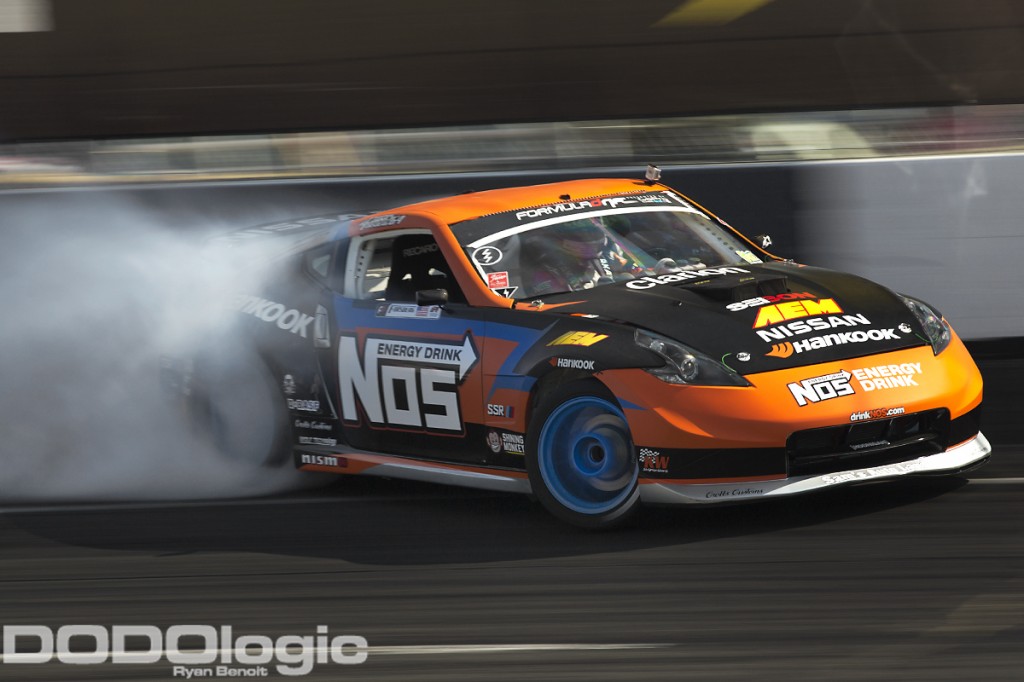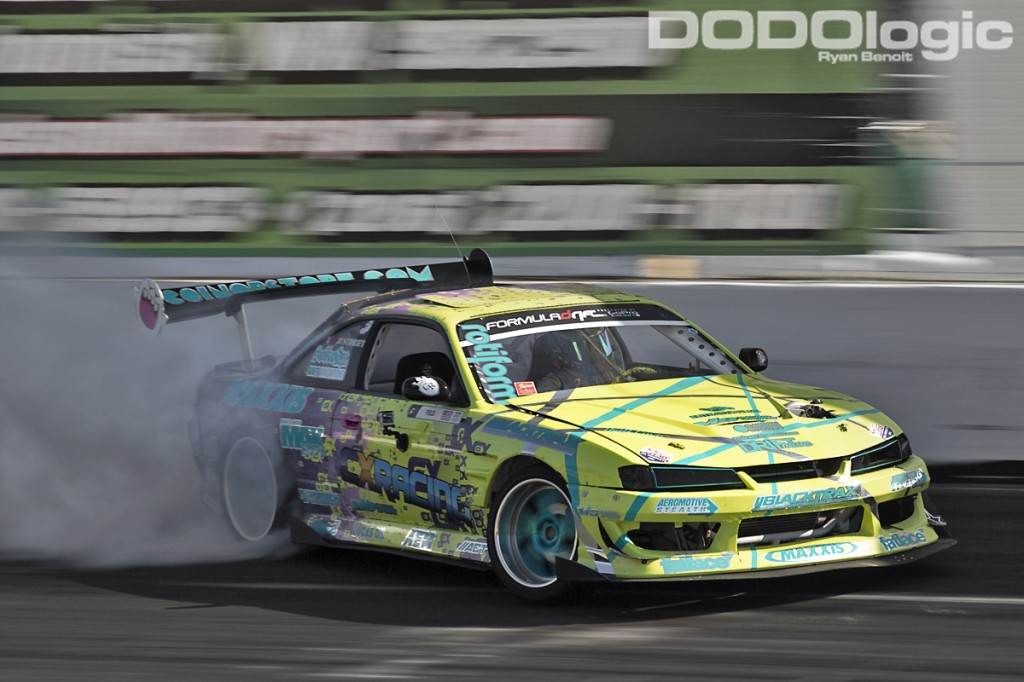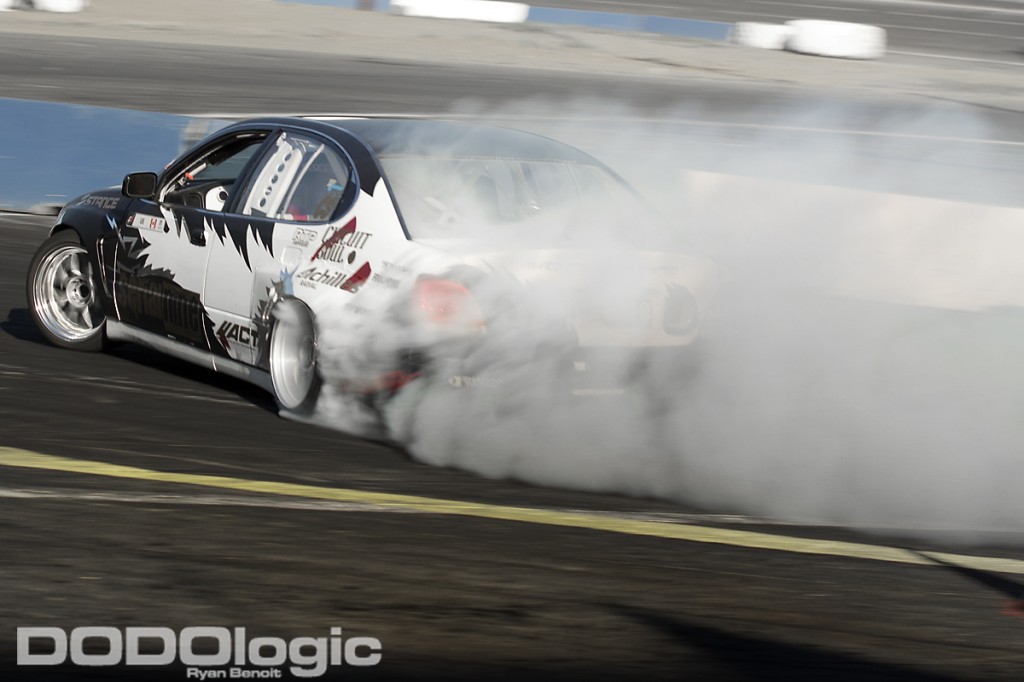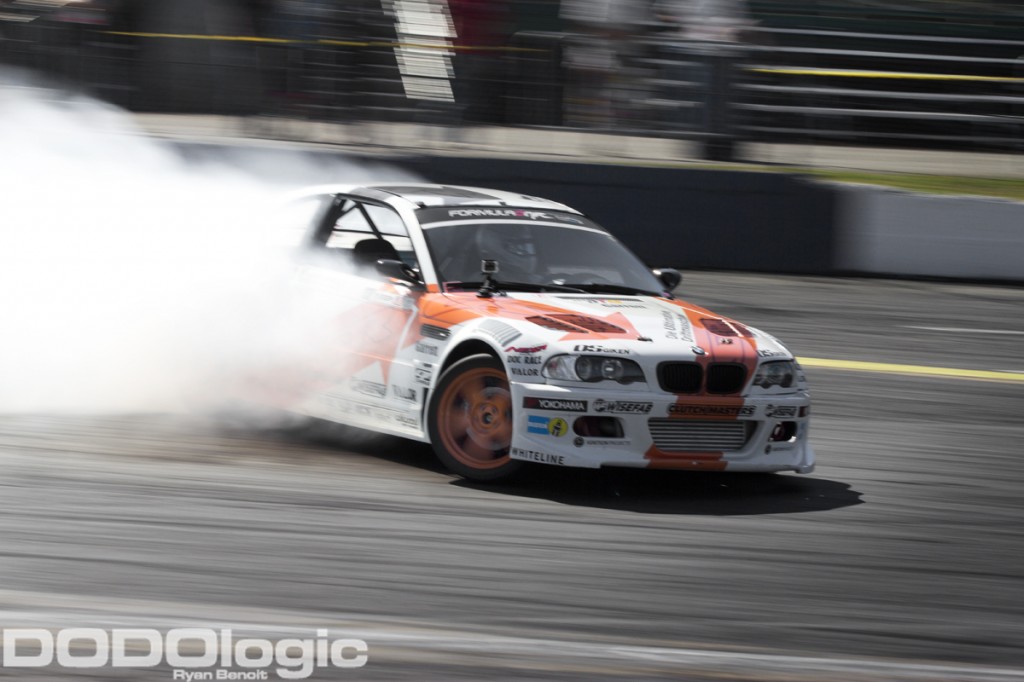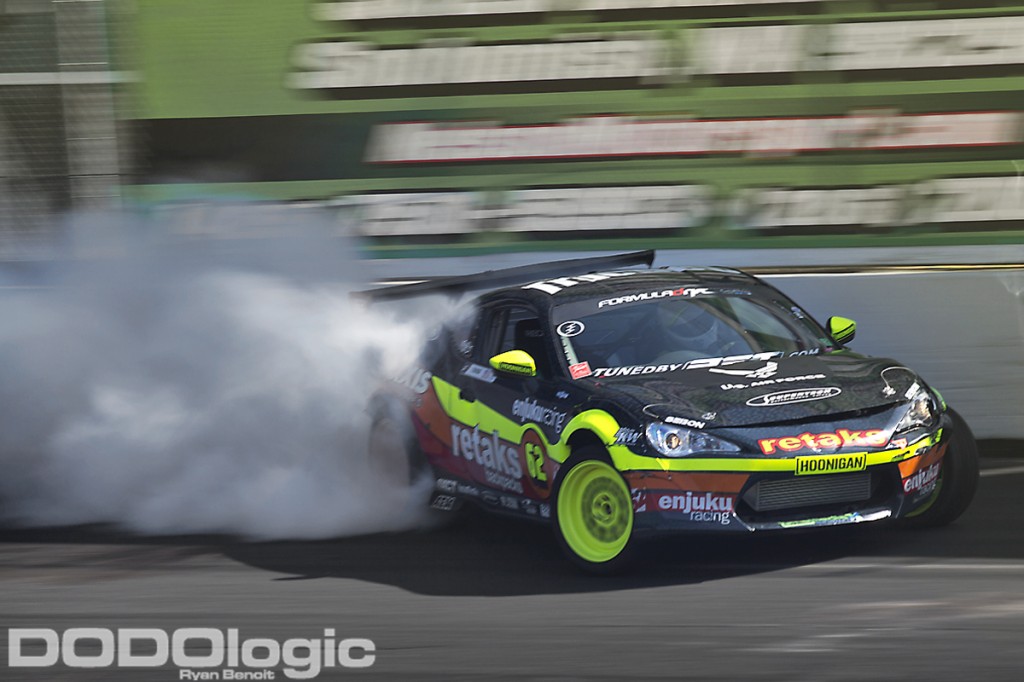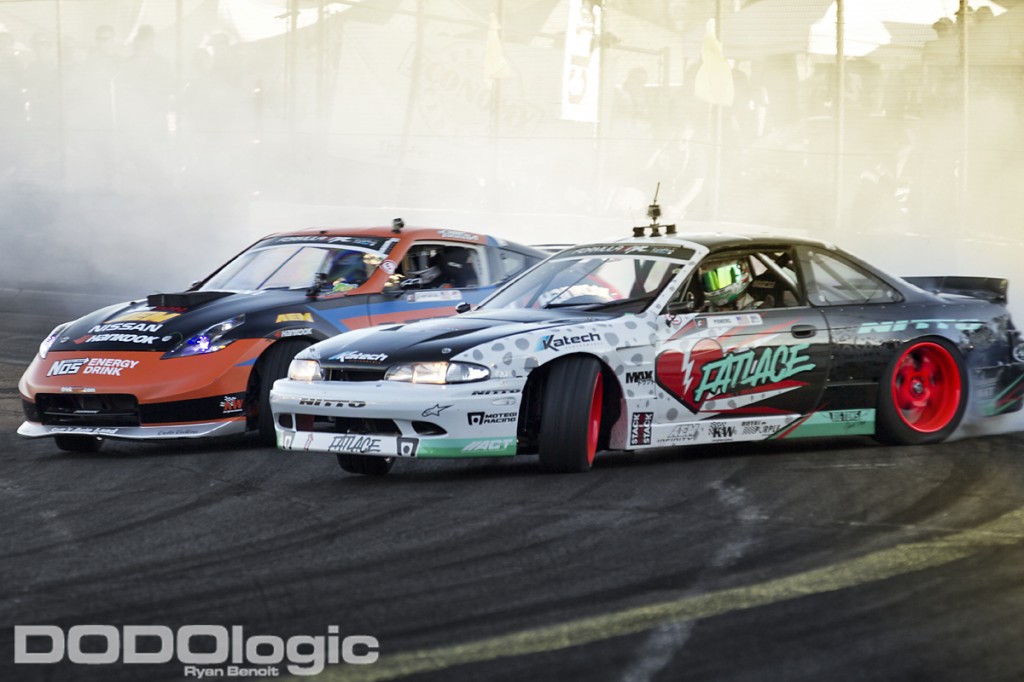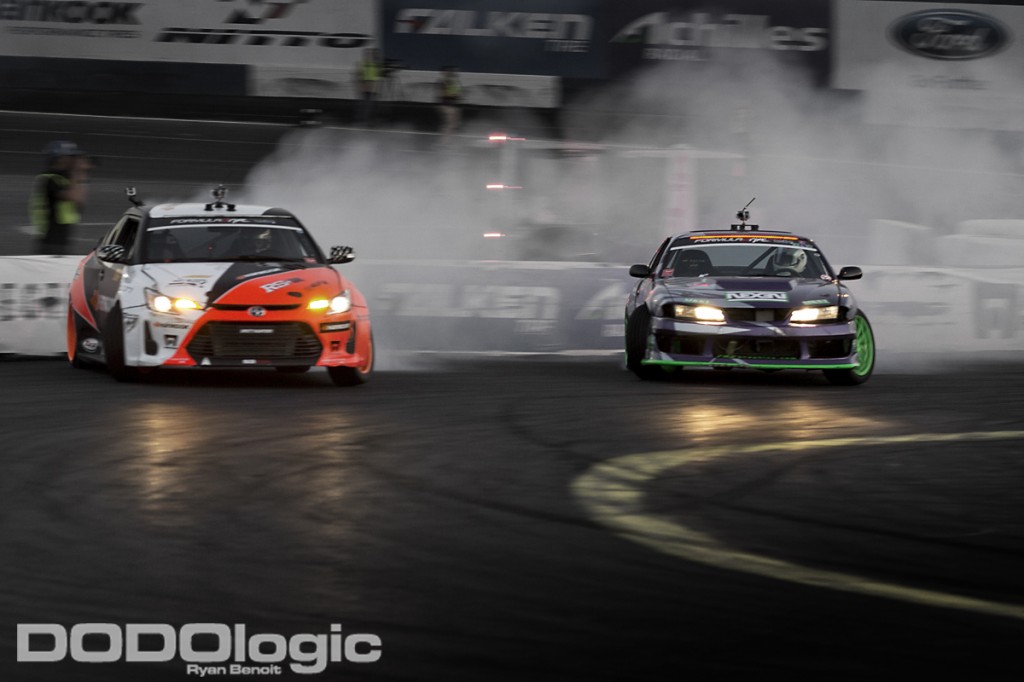Two days out of every year, I run away and join the circus. There’s no big top, clowns or elephants — just the sound of high horse power cars and the smell of burnt rubber. The weekend quickly comes and goes, and at the end you find yourself covered in a film of rubber, questioning what just happened. The one certainty you’re left with is that you can’t wait for it to all happen again.
This is what it feels like to experience Formula Drift in person. There’s nothing else like it and once you get your fix, it’s hard to kick the habit. This is my fourth Formula Drift event and third time shooting it, and although it could become old hat, I guarantee it’s always as exciting — if not more — than the last time.
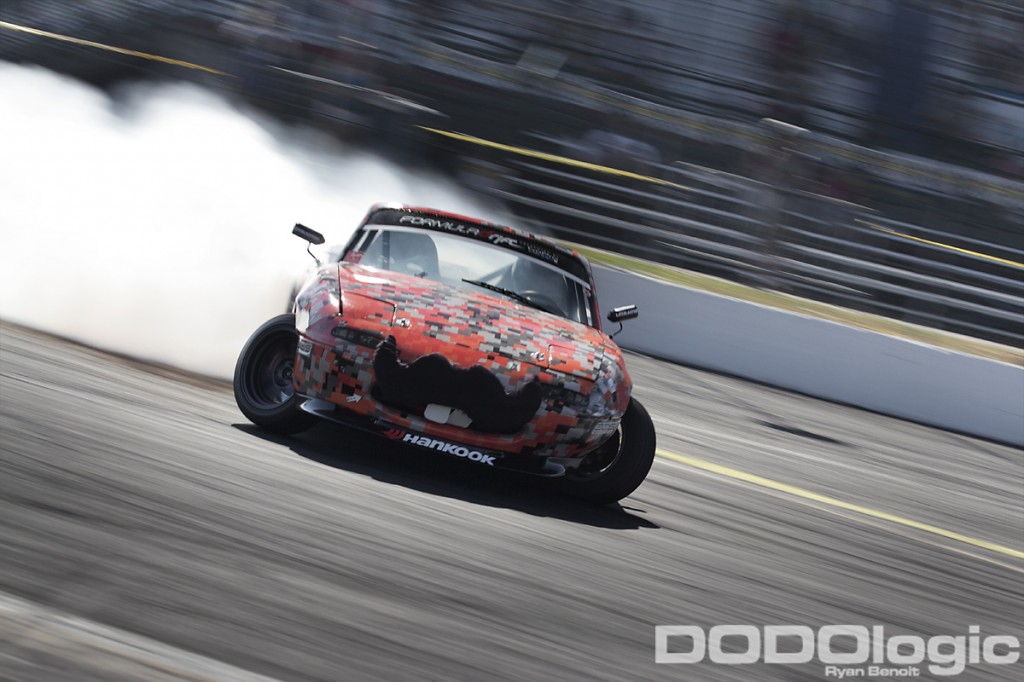 The process for me getting to this event is never easy. It requires plane rides, planning, international travel and a lot of goodwill from others. This year I pretty much re-arranged my life to shoot this event. I moved away from home for a month, worked out of a different office and made many other sacrifices just to be there.
The process for me getting to this event is never easy. It requires plane rides, planning, international travel and a lot of goodwill from others. This year I pretty much re-arranged my life to shoot this event. I moved away from home for a month, worked out of a different office and made many other sacrifices just to be there.
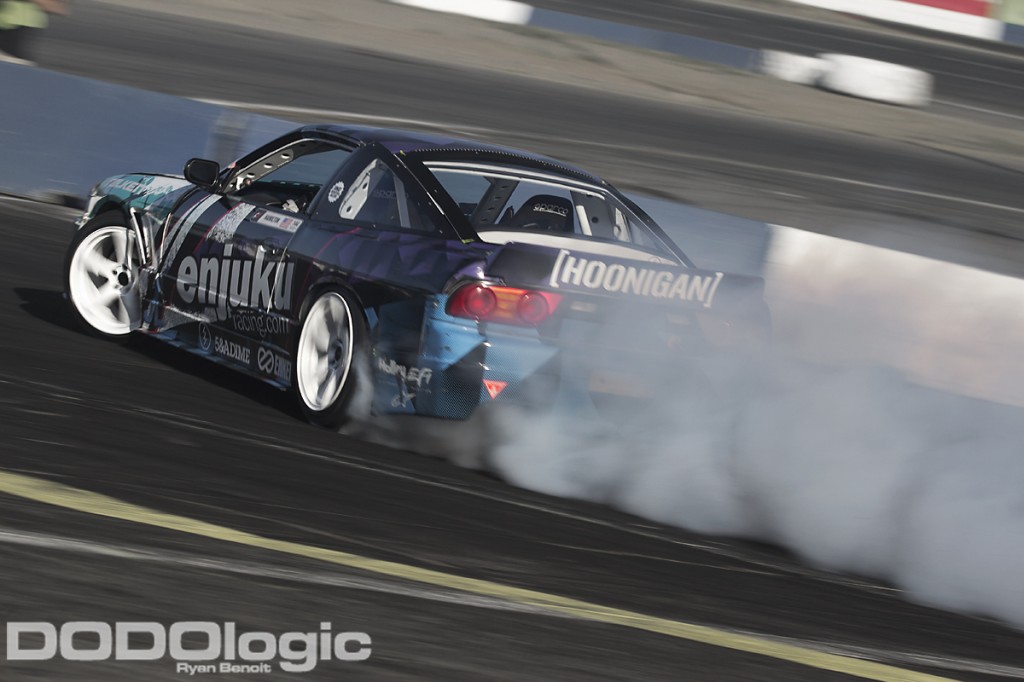 The reward for these sacrifices isn’t monetary. In fact, the life of an automotive media guy runs pretty parallel to that of the drivers. Yes, some make a go at it, but the reality is most people are paying out-of-pocket just to be there and be part of it all.
The reward for these sacrifices isn’t monetary. In fact, the life of an automotive media guy runs pretty parallel to that of the drivers. Yes, some make a go at it, but the reality is most people are paying out-of-pocket just to be there and be part of it all.
Being in the field and standing shoulder to shoulder with the other members of the media is like watching the internet happen in real life. Being from the middle of Canada, most of how I absorb events at this level is through the internet. When I do get to attend them and shoot, it can occasionally be a little surreal.
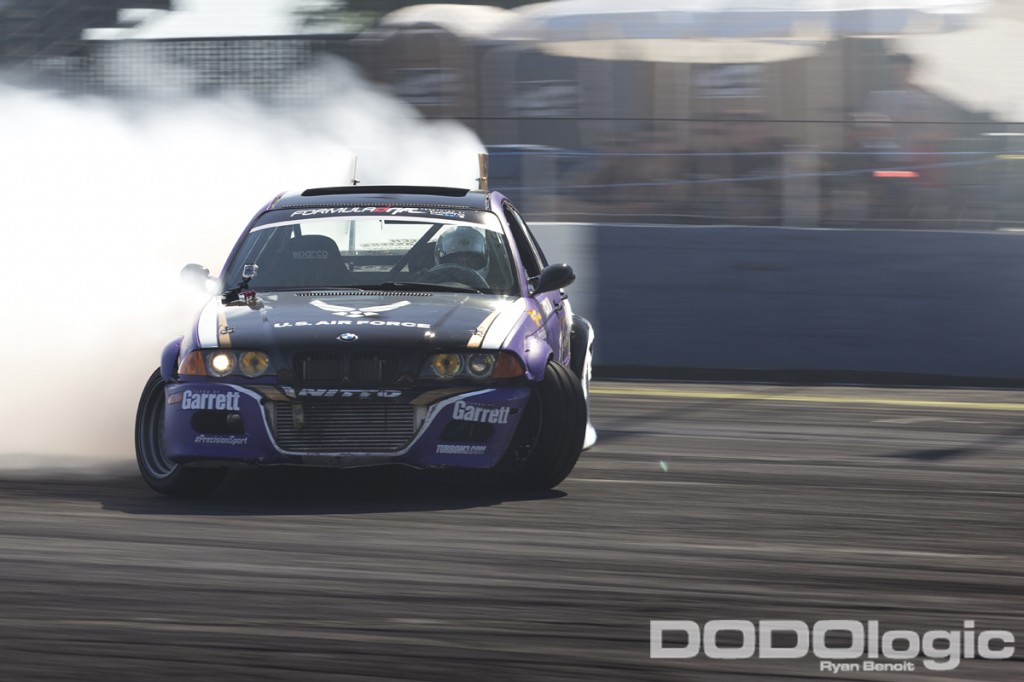 I spend hours upon hours of my life watching videos, reading articles and staring at pictures from these events. However, nothing compares to seeing it first hand: hearing the rumble of the engines, breathing in the smell of smoke and finding chunks of tire in your hair long after the event has ended.
I spend hours upon hours of my life watching videos, reading articles and staring at pictures from these events. However, nothing compares to seeing it first hand: hearing the rumble of the engines, breathing in the smell of smoke and finding chunks of tire in your hair long after the event has ended.
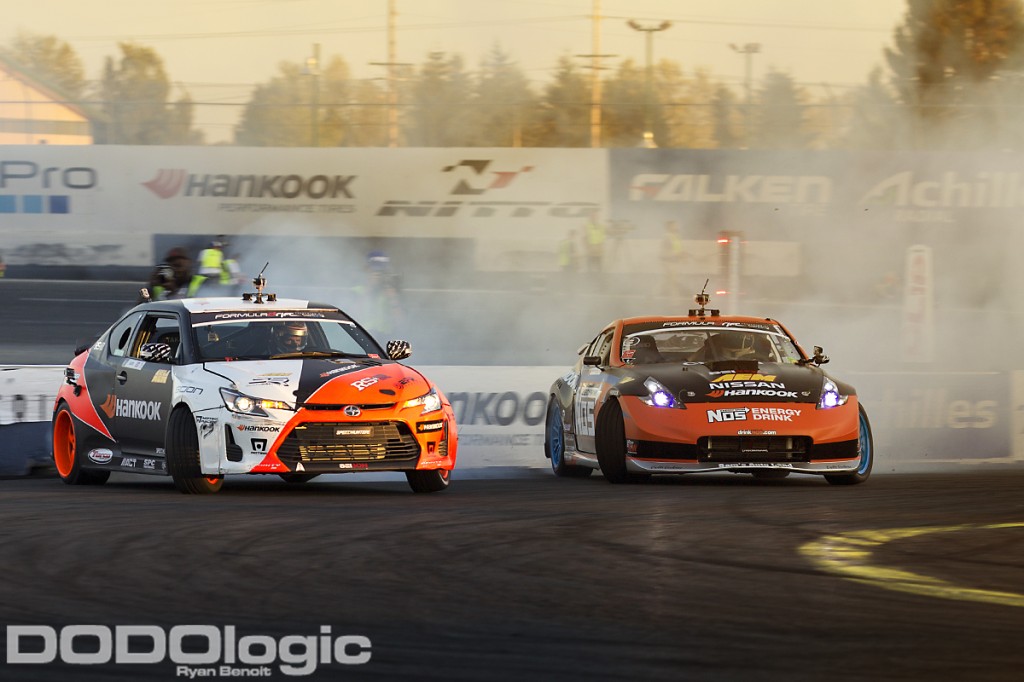 It occurred to be that Formula D is more than sensory overload. This past weekend, I realized just how much Formula Drift challenges me to be better. The process can be frustrating and downright defeating, but by the end of the event I always come out knowing more and being better for it. I take what I learn each year and apply that to how approach content for the rest of year.
It occurred to be that Formula D is more than sensory overload. This past weekend, I realized just how much Formula Drift challenges me to be better. The process can be frustrating and downright defeating, but by the end of the event I always come out knowing more and being better for it. I take what I learn each year and apply that to how approach content for the rest of year.
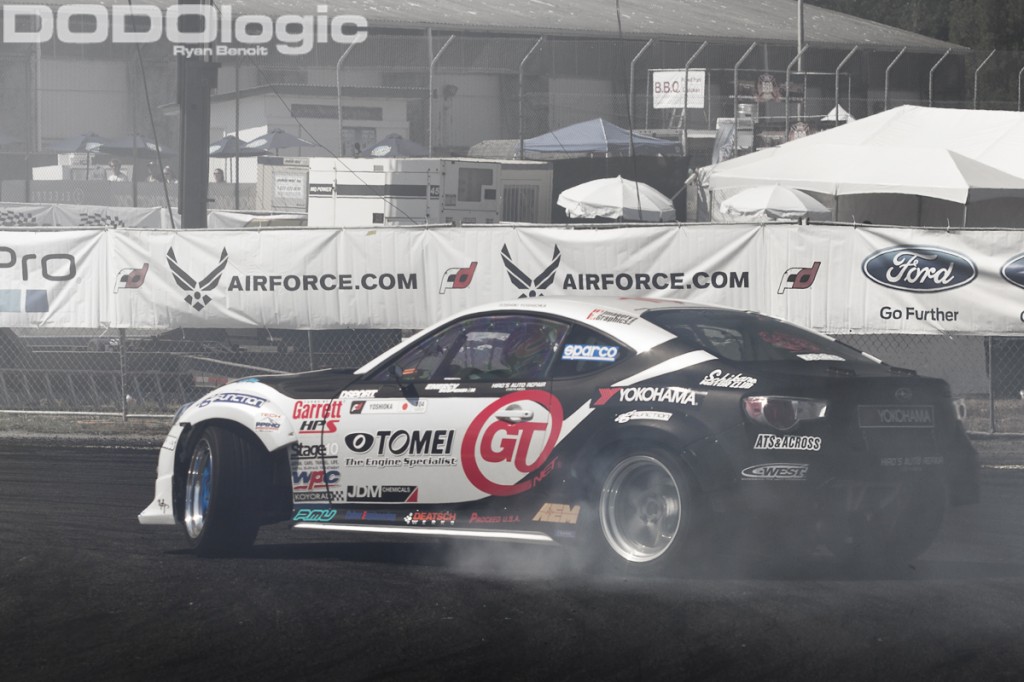 It seems to be the very essence of Formula D; everyone pushes themselves to their limits because it’s a motorsport with no guarantees. There’s very little room for error and there’s always room for an upset. Things can change quickly over the course of two days. A once-promising lead in the points could be diminished to a level-playing field and the series can become anyone’s game.
It seems to be the very essence of Formula D; everyone pushes themselves to their limits because it’s a motorsport with no guarantees. There’s very little room for error and there’s always room for an upset. Things can change quickly over the course of two days. A once-promising lead in the points could be diminished to a level-playing field and the series can become anyone’s game.
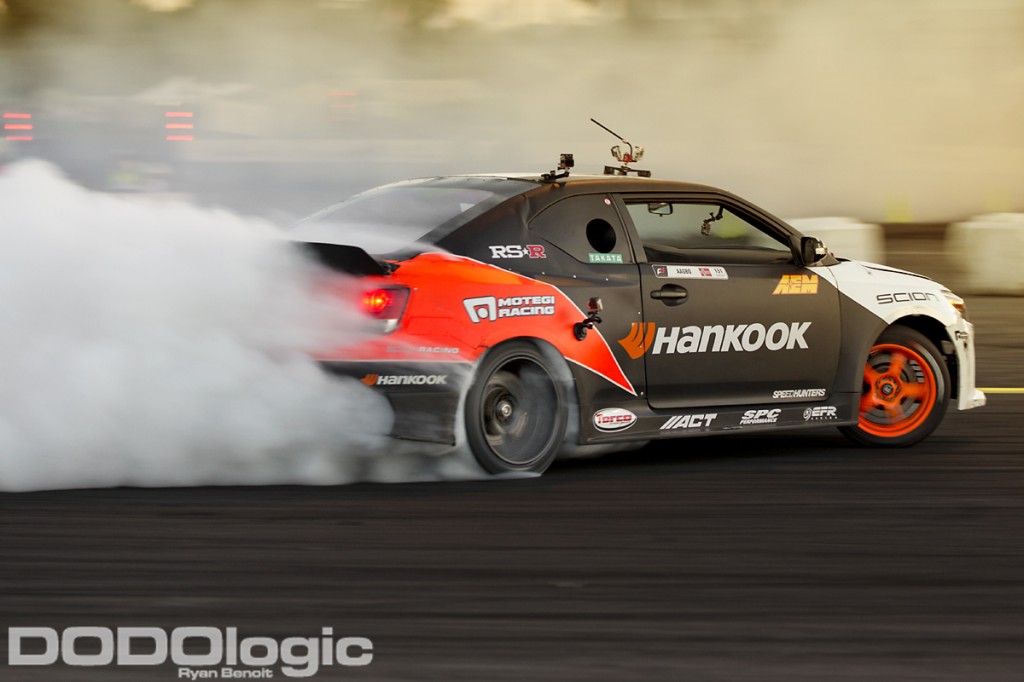 Aside from the amazing driving and all the entertainment, a huge draw are the people. Every year I meet more people who make the long trip alone worth it.
Aside from the amazing driving and all the entertainment, a huge draw are the people. Every year I meet more people who make the long trip alone worth it.
As a Canadian, I’m constantly overwhelmed by the popularity of this series. I often find myself thinking it’s a whole different world down there. Drifting in Canada is still pretty niche and isn’t really part of our motorsport vocabulary. Usually when I tell someone that I am going to shoot a drift event, it’s quickly followed by a definition of what drifting is. That’s not the case, however, with Formula Drift. Over the last ten years they have brought drifting into the mainstream.
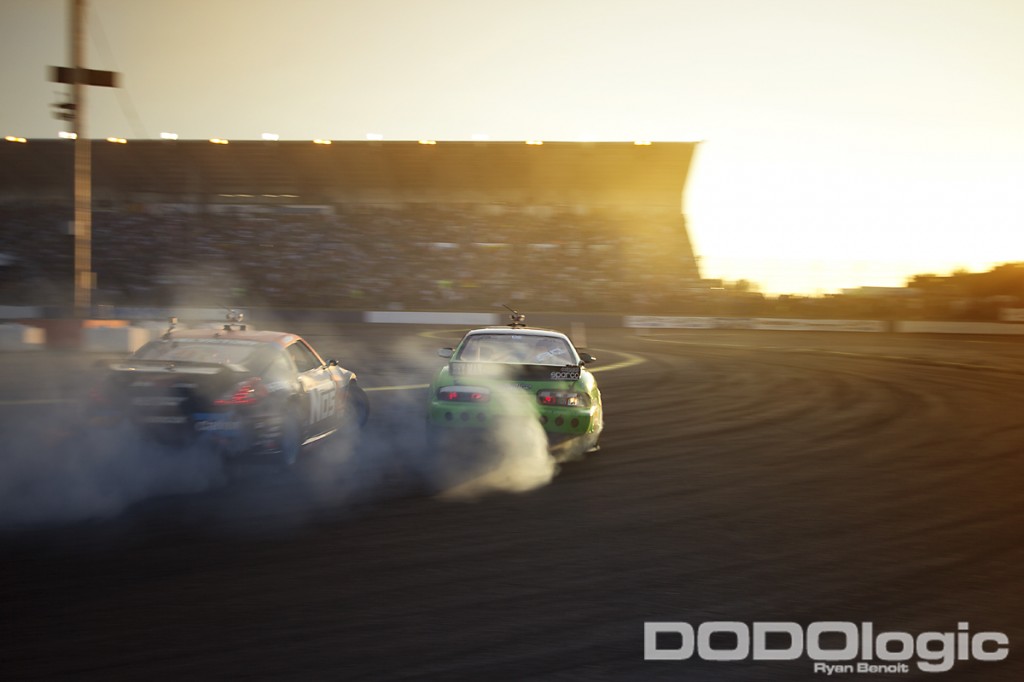 As I mentioned, it takes a lot work and planning for me to get to this event, but I continue to do it every year because it only gets better and better. And hopefully in turn, I get better and better.
As I mentioned, it takes a lot work and planning for me to get to this event, but I continue to do it every year because it only gets better and better. And hopefully in turn, I get better and better.
In case you are curious, third place went to Fredric Aasbo and second went to Michael Essa. Chris Forsberg fought long and hard and took home first place in his Nissan 370Z.
